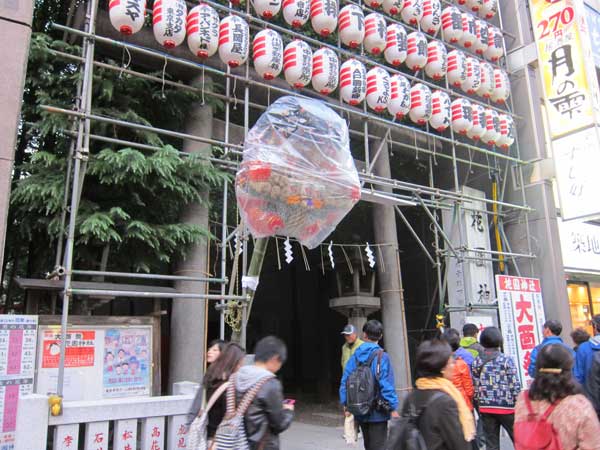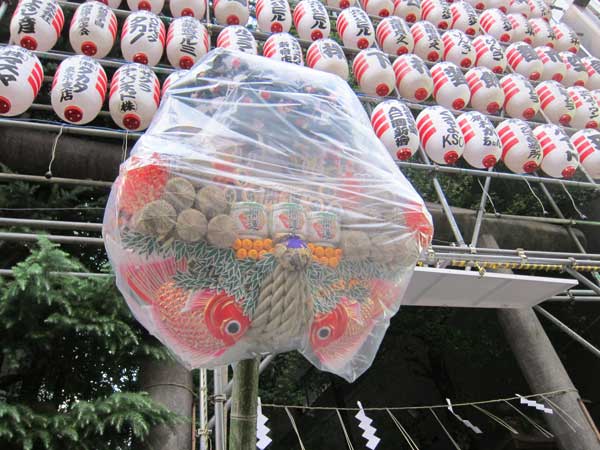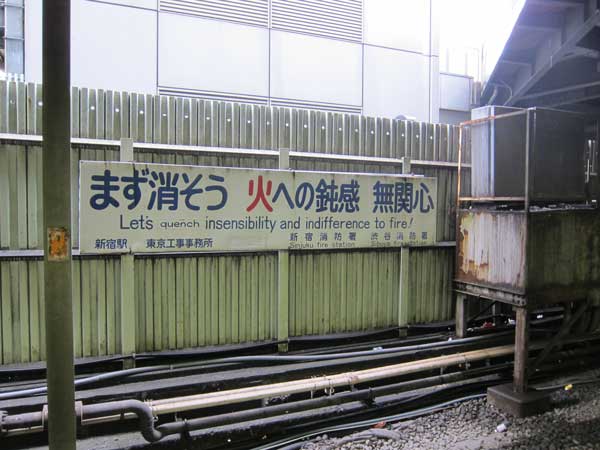
今年は酉の市が三回あります。もう熊手を買いました。同じ日に新しい仕事の契約を結びましたから、去年のよりサイズアップしました。新宿花園神社のこの祭りが大好き。たくさん水商売のオーナーが参拝にきます。でも、酉の市が三回ある年は、火事の危険が高くなると言われています。
With an entrance on Yasukuni Dori no wider than the average office building, the large Hanazono shrine in Shinjuku can easily be missed. Except in November, when the entrance is filled with lanterns and a giant rake, protected in plastic from the rain, for Tori no Ichi festival.
This festival centers around the sale of lucky rakes, made of bamboo and hot glued ornaments including rice, pine, gold coins, tai fish, and other lucky charms. One variation included all the Anpanman characters.
This year, I “sized up” from last year’s rake. The first day of the festival, I signed a new contract so I guess last year’s rake worked! I dutifully took last year’s rake back to the shrine, and added it to the pile of old rakes.
When you purchase a rake, the sellers gather around and clap wood blocks to wish you luck. I saw one rake purchased that cost 300,000 yen (yes, over US $3,000) and had to be carried by two men. Delivery is probably free when you buy such a huge one.
What makes this particular shrine fun is that all this spiritual and monetary focus caters to the Shinjuku nightlife world, as it stands in the center of Kabukicho, Golden Gai, and Ni Chome.
Because of the vagaries of the lunar year, this year there are three days this month for the festival (Nov 2, 14, and 26). There’s a superstition that when there’s three festival days, there is an increased risk of winter fires.
As fall turns to winter, I expect to hear small groups of people walking my residential neighborhood and clapping wood blocks to warn residents of the danger of fire. In the meantime, this oddly patched warning showed up at a train station. I wonder what word is underneath the English correction.









